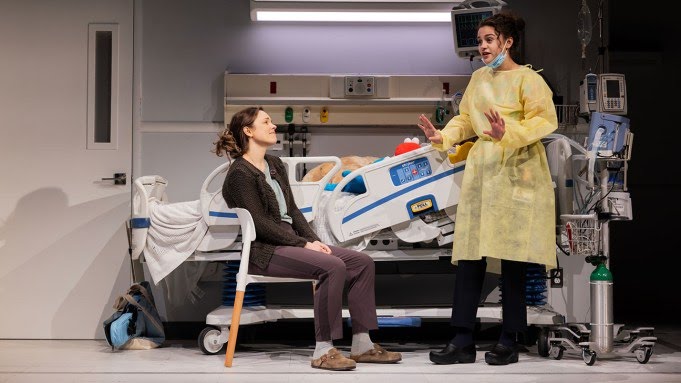The actress plays a single mother navigating an unforgiving healthcare system while caring for her sick child.
In many ways, the role of Mary Jane, the single mother at the center of Amy Herzog’s compassionate play Mary Jane, was made for Rachel McAdams.
The actress’ most notable characters include an acid-tongued high-school student (Mean Girls), a lovesick Southern belle (The Notebook) and a tireless investigative reporter (Spotlight), but last year she delivered a quietly moving performance in Are You There God? It’s Me, Margaret, which marked a new turn in her understated style.
In Kelly Fremon Craig’s adaptation of Judy Blume’s novel, McAdams breathed new life into Margaret’s mother Barbara, a woman estranged from her conservative family after marrying a Jewish man (Benny Safdie). The actress’ best scenes are the hushed ones, moments in which her character, enveloped by the quiet of an empty house, releases the tension in her shoulders and indulges in her anxieties and uncertainties. Not only must Barbara help Margaret navigate the dramas of adolescence, but she must also adjust to the realities of suburban motherhood and negotiate her own kind of religious existentialism.
Mary Jane, too, is working through a crisis of faith, although her emotional troubles are buried under layers of congeniality and optimism. Her two-year-old son Alex — whose presence is always felt, but never seen — requires around-the-clock care for his chronic illnesses. Their apartment, impressively designed by Lael Jellinek, bustles with activity. We meet Mary Jane in the middle of a conversation with her superintendent, Ruthie (an excellent Brenda Wehle). As the older woman attacks a clogged sink with a plunger, Mary Jane rambles. Their chatter is warm, quick and witty — the kind of real, lived-in talk one might find in a play like Annie Baker’s Infinite Life. Later, we will see the mother rummaging through the kitchen to find IV fluid bags and home nurses tiptoe into the apartment for their night shift. The space vibrates; the chaos is coordinated.
Herzog, who is enjoying a Broadway moment with the premiere of her adaptation of Ibsen’s An Enemy of the People, based Mary Jane on some of her own experiences as a parent: Her daughter was born with a rare muscular disorder and died last year at the age of 11. Underneath the rush of bodies in Mary Jane, which was directed by Anne Kauffman, there is the stillness of contemplation. The heart of this play is in Mary Jane’s conversation with her community: mothers in a similar situation (both played by Susan Pourfar); her nurse and her doctor (April Matthis); a young woman and a hospital music teacher (Lily Santiago); her superintendent and a chaplain (Wehle). That these characters, whom she encounters at home and later in the hospital, are played by the same actors lends these already striking performances a powerful emotional valence.
It’s as if these actors are also buoying McAdams, who makes her Broadway debut here. She takes cues from these women, modulating the pitch of her performance to keep in tune, and only occasionally falls into the dramatic traps of Hollywood stars taking the stage. Overall, it’s a searching and poignant turn, finding and offering us different versions of Mary Jane. In the presence of Brianne, a mother embarking on a similar journey, or Sherry, her friend and Alex’s nurse, Mary Jane is a fast-talking well of information on how to navigate different social services with a chronically ill child. But scenes later, when Brianne becomes Chaya, a Hasidic mother for whom the hospital has become a second home, or Sherry is Dr. Toros, Alex’s attending surgeon, we can see the weight of Mary Jane’s obligations. It’s in the hungry look she gives Chaya as the woman tells her own story, or the rage bubbling to the surface as Dr. Toros delivers troubling news.
Mary Jane is as much about community as it is about the tension of a bifurcated existence — the painful severance one feels in a society that renders the chronically ill and those caring for them invisible. Kauffman and Jellinek use the set, filled with revelatory moments of movement, to reflect the security of an apartment building in Queens versus the sterility of a hospital. Ben Stanton’s lighting attunes audiences to the pull of optimism against the seduction of nihilism. And in the conversations we find Mary Jane, in the face of despair and as a kind of self-protection, always choosing hope.
